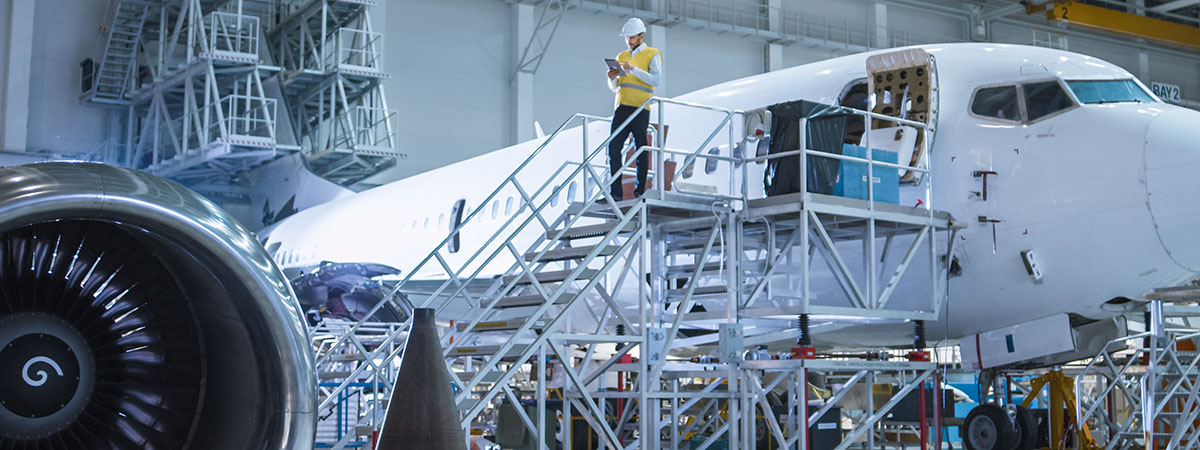When it comes to aircraft maintenance and the requirements that must be met to keep them airworthy, it is quite normal for most people to think about their moving components, airframe, engines, or cabin equipment, which are their most visible elements. But there is a significant unseen component to all this maintenance, one that basically and truly actively manages the elements of an aircraft: avionics maintenance.
Maintaining aircraft systems is an ongoing challenge in terms of both external equipment and technical personnel.
Avionics refers to the electrical, electronic and control systems that allow an aircraft to fly safely, navigate in a controlled manner and travel from one place to another with no errors or mishaps.
The first flights in the early 20th century were a great feat, because they did not have any technology that allowed pilots to control the aircraft, other than some manually activated mechanical levers and pedals, which only allowed them to stay in the air for a few seconds. They soon realised that flying required having control of many physical and technical aspects, areas that would require many years of research.
Throughout the second half of the century, following the technological advances achieved in the Second World War, civil aviation consolidated itself as one of the main sectors of economic activity. Today, the transport of people and goods throughout the world accounts for more than 10% of the global GDP, and according to forecasts, it will continue to rise by 4.3% annually in coming years (the only unknown is how the current pandemic, and its consequences will affect it).
This need for aircraft to have ever greater range, improved comfort on long journeys, and higher load capacity, has led to various systems being added to aircraft to aid with navigation and enhance passenger comfort. Some of these include aircraft systems for automatic navigation and flight control, cabin control and conditioning, external aerodynamic surfaces, instrumentation, electrical supply, aircraft lights, cabin notification and training, communication and information management, electronic flight controls, electrical connections and protection, engine indication, firefighting, hydraulics, pneumatics, fuel and refuelling, cargo, etc. To an increasing extent, technologies are being added to aircraft that need to be integrated into one shared space while working together with one another. In recent years, commercial aviation has undergone a major renewal process, with a certain focus on upgrading fleets with new aircraft that are more fuel efficient, emit less and have more sophisticated avionics.
Currently, the inclusion of fibre optics and state-of-the-art computer equipment makes an aircraft an increasingly complex piece of hardware and software that needs checks, updates, and maintenance with a clearly digital, rather than mechanical, focus.
To maintain these systems over time, in addition to the checks that on many aircraft are already built into the equipment, operators need to rely on external devices that connect to the aircraft and that work quickly and efficiently so that ground crews can run the necessary tests. In addition, large airlines need to have a large logistics network in place all around the world in which to connect these devices and perform this maintenance.
These maintenance operations are conducted using interface modules consisting of multiple electronic cards installed on one or more racks located in the maintenance hangar and managed by various computers through a network of connecting cables. These external devices are large and expensive. They must remain operational all day, have extensive connectivity options for different types of aircraft, and be able to control and perform tests that simulate the different ground/air conditions that an aircraft experiences on a typical day. Due to the characteristics of the fixed test equipment, airlines must schedule this maintenance beforehand, and have alternatives for the most urgent cases.
Work is ongoing to design smaller, more portable, versatile, autonomous, mobile and, consequently, more cost-effective external equipment to carry out these processes. Companies such as AERTEC, in collaboration with AIRBUS Defence and Space, have been innovating in this field by developing these types of devices in recent years. One such portable device for doing functional tests is called Dongle AIM.
This device can connect directly to the aeroplane by cable or wirelessly and can run tests in any location. It can send and receive a wide variety of signals, thus avoiding the need to constantly move the aircraft to permanent facilities. This small device has already successfully passed laboratory tests and is in the process of being tested on aeroplanes. This is a major step forward in this field, as it makes it easier to manage and maintain systems. It also paves the way for vastly reduced times and costs for this type of maintenance.
It is also of great help to the team of technicians who carry out this type of testing and maintenance, as it allows them to work with a small device that is easy to move. Because it is worth remembering that behind all this technology, there is a major team of people who are responsible for doing all the tests. These are the electronic and avionics systems maintenance technicians. These people need to have a licence issued by the relevant agency that allows them to perform this type of maintenance. They must also have specific training on each system.
This aspect of system maintenance offers a constant challenge to both external equipment and technical personnel, as well as to the testing methods that are necessary to carry out these tasks, which rely on the most advanced aviation technology to ensure that aircraft systems are in perfect working condition.



